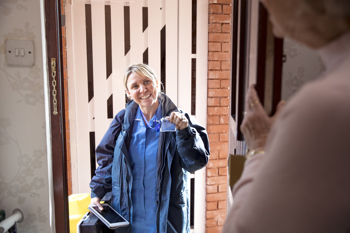
What are CQC Notifications and Why are they Important?
CQC notifications refer to the legally mandated reports that registered care providers must submit to the CQC regarding certain significant events. These reports enable the CQC to monitor compliance with regulations, identify risks and take action when necessary to protect care recipients. Failing to submit these notifications can lead to enforcement actions, including fines or even prosecution.
Timely and accurate reporting benefits both care providers and those they support. It demonstrates transparency, strengthens the provider’s commitment to safeguarding individuals and helps maintain a positive relationship with regulatory authorities. Understanding which incidents require notification is crucial to ensuring continuous compliance.

Types of CQC Notifications Care Providers Must Submit
Care providers must notify the CQC of specific incidents that could impact the safety, well-being or rights of care recipients. These reports allow the CQC to monitor serious events and take action if necessary. Understanding the different categories of CQC notifications ensures that providers remain compliant and accountable while safeguarding those in their care. Here are the types of CQC notifications providers must submit:
1. CQC Notification of Death
Any death of a care recipient that occurs while receiving regulated care must be reported to the CQC as a CQC notification of death. The provider must explain the circumstances and any contributing factors. Even if the death is due to natural causes, it remains a regulatory requirement to notify the CQC within the specified timeframe.
2. CQC Notification of Abuse
Providers are required to notify the CQC about allegations or incidents of abuse affecting care recipients. This includes physical, emotional, financial, sexual, discriminatory abuse or neglect. Even if the case is under investigation or has been referred to safeguarding authorities, the provider must still submit a CQC notification of abuse.
3. CQC Notification of Serious Injury
A serious injury sustained by a care recipient while in care must be reported. This includes incidents leading to fractures, significant burns or any injury resulting in permanent or long-term impairment. In their CQC notification of serious injury, the provider must outline the circumstances and actions taken to prevent recurrence.
4. CQC Notification of Liberty Safeguards (LPS)
The CQC notification DoLS (Deprivation of Liberty Safeguards) system was replaced by the Liberty Protection Safeguards (LPS) under the Mental Capacity (Amendment) Act 2019. However, as of April 2023, the UK government announced that the implementation of LPS has been indefinitely delayed, with no confirmed introduction date.
Currently, providers must continue to report DoLS authorisations to the CQC under the existing framework. Once LPS is implemented, providers will need to follow updated notification procedures, which will include reporting new authorisations and renewals following the revised legal framework.
5. CQC Notification Police
6. Service Disruptions and Safety Concerns
Significant events that disrupt the safe operation of a service must also be reported. This could include utility failures, a cyber-security incident, severe staff shortages or other emergencies that compromise the quality of care. Providers must notify CQC of such disruptions, particularly if they pose a risk to the well-being, health or dignity of care recipients.

How to Submit CQC Notifications
To remain compliant, providers must follow the correct submission procedures which have been highlighted below:
- Use Official CQC Notification Forms – The CQC provides specific forms for each type of notification. Completing these forms accurately ensures all necessary details are included.
- Submit Through the Online Portal – Providers should use the CQC’s digital platform to submit notifications efficiently.
- Meet Required Deadlines – Each notification type has a designated timeframe within which it must be reported. Delays can lead to compliance issues.
- Maintain Internal Records – Keeping a copy of submitted notifications ensures accountability and assists with future audits or inspections. In addition, if there are lessons to learn from reflexions regarding the notification, track these actions & changes.
Challenges in Managing CQC Notifications
Despite the clarity of the requirements, care providers often face obstacles in managing CQC notifications effectively. The administrative burden of tracking incidents, completing paperwork and ensuring timely submission can divert valuable resources away from direct care. Additionally, inconsistent reporting practices across teams can result in missed or delayed notifications, increasing the risk of regulatory breaches.
Providers must also navigate evolving CQC guidelines, which may introduce new reporting requirements or changes in existing procedures. Staying updated and ensuring compliance across all levels of an organisation can be complex without dedicated support.

Digitise to Simplify Compliance
Navigating CQC notifications can be complex, but with the right knowledge and tools, providers can ensure compliance while maintaining their focus on delivering high-quality care. Understanding the different types of required notifications, CQC notification forms, submission processes and challenges is essential for regulatory success.
Here at The Access Group, we are committed to supporting care providers with expert guidance and innovative software solutions. With Access Care Compliance, our industry-leading software designed to help care providers manage regulatory requirements efficiently, you will be able to tackle the challenges when it comes to managing CQC notifications digitally.
From automated compliance tracking and centralised document management to customisable alerts and reminders and a user-friendly interface, Access Care Compliance has been built with direct input from care providers, ensuring that it meets the specific needs of the sector. Our solution sits alongside our Access Care Software, offering an all-in-one compliance and care management system.
If you would like to learn more about implementing our trusted solutions into your care service, please contact us today for more information or speak to one of our experts about booking a demo.

 AU & NZ
AU & NZ
 SG
SG
 MY
MY
 US
US
 IE
IE

